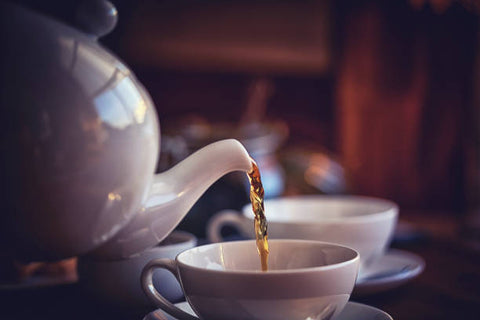Herbal Infusions
An herbal infusion may be one of the simplest ways to implement herbs into your daily routine. Herbal infusions offer an easy method for consuming the oils and flavors from favorite herbs. An herbal infusion is the process of steeping (soaking) herbs in water until the water absorbs the oils and flavors, then drinking the liquid for the taste or for the medicinal value usually for about 4-8 hours.
What exactly is an herbal infusion?
Herbal infusions use large amounts of leaves, stems and flowers commonly referred to as decoctions which typically uses roots, barks, and seeds. Decoctions (a stronger infusion) is one of the most revered methods to use herbs as restorative. Decoctions call for a longer steeping period.
How to make an herbal infusion in water:
Instructions
-
As a general rule, herbal infusions can be made using 1 teaspoon of dried herbs or 2 teaspoons of fresh herbs per 1 cup of water.
-
There are many methods for preparing an herbal infusion. The most common is to measure the amount of herbs needed and place it into a heat-proof container (such as a canning jar or bowl).
-
Boil water and pour it over the herbs.

The difference between an herbal infusion, herbal tea and tisanes
Even though they are both considered infusions they are still different. As stated previously infusions use larger amounts of plant matter to be steeped for a longer period of time. Teas, however, use just the leaves in a much smaller quantity for a shorter time. The only real difference is the amount of herbals used and for how long they are steeped for.
True teas made from herbs, flowers and spices other than the Camellia sinuses plant (i.e., the plant that is used to create black, oolong, green, and white teas).
Herbal teas called tisanes are also a major part of the tea world, but they also aren't true teas. Tisanes are usually categorized by what part of the plant of the plant they come from.
Examples of tisanes are:
Leaf tisanes - Lemon balm, Mint, Lemon grass, and French verbena
Bark tisanes - Cinnamon, Slippery Elm, and Black Cherry
Flower tisanes - Rose, Chamomile, Hibiscus, and Lavender
Root tisanes - Ginger, Echinacea, and Chicory
Fruit/Berries tisanes - Raspberry, Blueberry, Peach, and Apple
Seed/Spice tisanes - Cardamom, Caraway, and Fennel
Most tisanes should be prepared as an infusion or a decoction. Sometimes they are made from blends of multiple parts of the of a plant. It can also be made with moss and steams.
Uses for herbal infusions
Herbal infusions can be uses for a wide variety of ailments and uses
- You can drink them hot or cold or they can be reheated for a quick nutritional boost
- Infusions are used in many homemade cosmetics and remedies, including topical salves.
- They can be used in natural and organic home products, such as garden fertilizers and insect repellents.
- An infusion of garlic and cayenne pepper does wonders for keeping rabbits away from your plants.

Herbal Oils
An herbal oil is a carrier oil that is infused with plant material. It can be made by letting the plant material to be infused in the oil for 3-6 weeks in the sun or a few hours over low heat in a crockpot. The infused oil has double the benefits of the oil and herbs.
It requires less plant material than essential oils to make an herbal oil infusion. The scent of herbs such as lavender, chamomile and plantain can be obtained through an herbal infusion. Carrier oils are base vegetable oils that are used to suck stronger plant material from the skin.
The strength of the essential oils and absolutes in the plant makes them too strong to be applied directly to the skin. The dried plant material is the best for herbal infusions because they don't have water. Water and elements can make the oil rancid.
Herbal infusions are great for everyone
I drink herbal brews, nourishing herbal infusions to be exact, instead of juice or water. Some herbs are powerhouses of nourishment, energy, and health-promoting factors.
By choosing those herbs as my drink, I increase the amount of protein, vitamins, minerals, and micronutrients in my diet without consuming extra calories, and at a cost of only pennies a day. I'd rather drink nourishing herbal infusions than any other beverages. I drink infusions in the morning, throughout the day, and in the evening, too.

